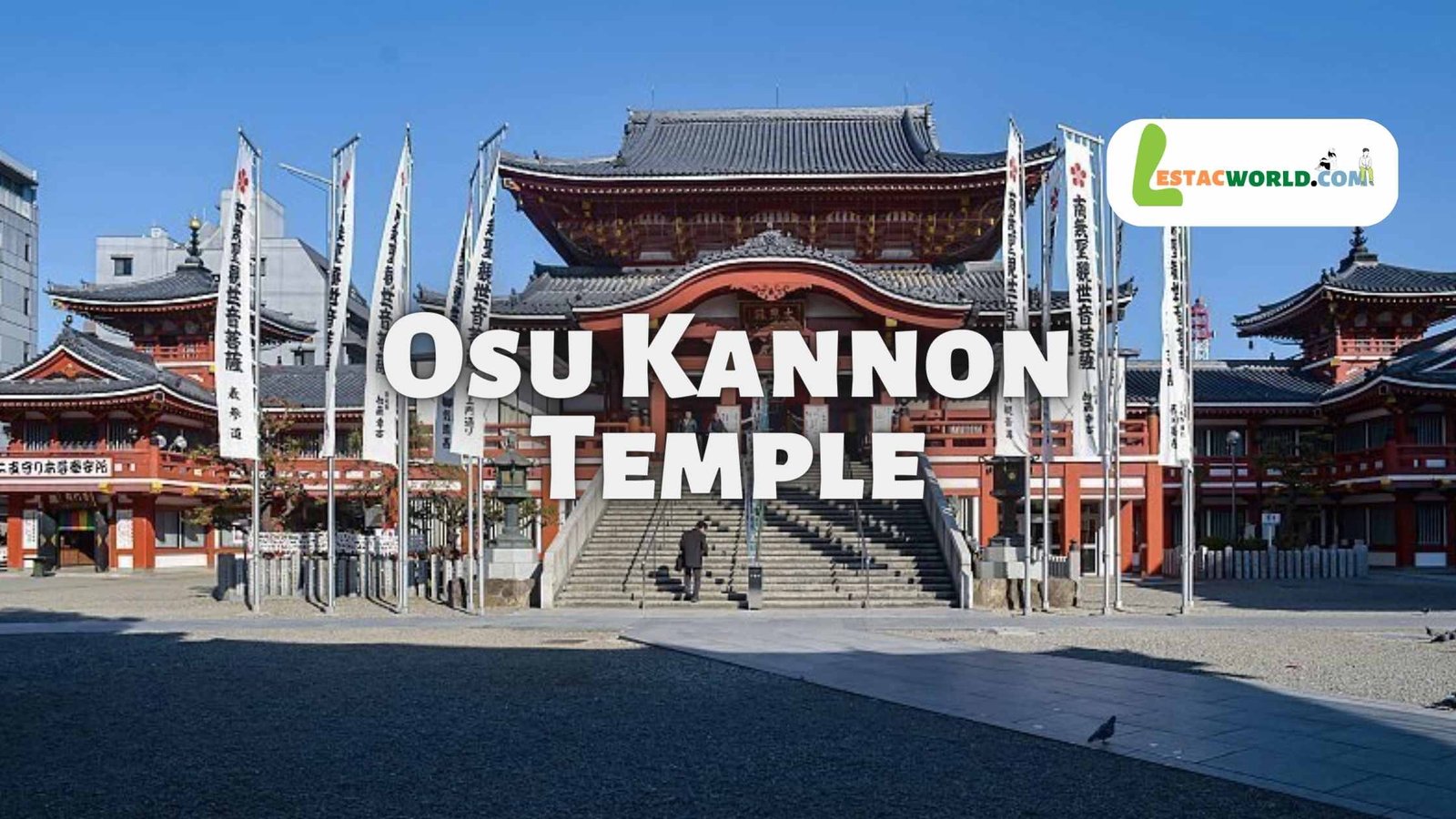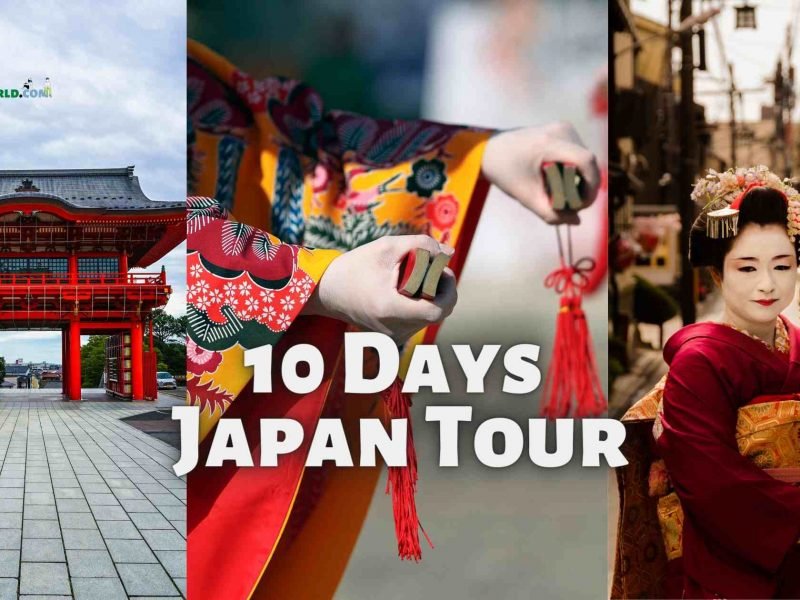About Osu Kannon Temple
Osu Kannon Temple is an ancient Buddhist temple that can also be referred to simply as Osu Kannon. It can be found in the city of Nagoya in Japan. In Japanese Buddhism, the bodhisattva Kannon is honored as the goddess of kindness and compassion. This temple was built in her honor and is dedicated to her.
The history of the temple, which dates back to the early 14th century when it was first established, is extensive and fascinating. It was completely obliterated during the civil wars that took place in the latter half of the 16th century, but it was afterwards reconstructed and enlarged during the Edo period (1603-1868). Nowadays, it is considered to be one of the most significant temples in all of Nagoya, and it is a well-liked attraction both by outside visitors and residents of the city.
The following are some of the features that make Osu Kannon Temple so special:
The exquisite wood carvings and gold leaf embellishments in the main hall of the temple are examples of traditional Japanese architecture, and the hall itself is a stunning example of this kind of building. This hall is devoted to Kannon, the Bodhisattva of Compassion, and it contains a sizeable statue of her.
Shinto Shrine In addition to the Buddhist temple that is located on the grounds of Osu Kannon, there is also a Shinto shrine located there. The shrine, which is devoted to a deity known in the area as Atago, is a frequent destination for people who want to give sacrifices and pray to the deity.
District Composed of Shops, Restaurants, and Street Vendors The neighborhood surrounding Osu Kannon is well-known for its lively retail district, which is comprised of a broad range of shops, restaurants, and street sellers. Guests will have the opportunity to purchase everything from antiques to the latest in Japanese fashion and technology.
Festivals and Events: Throughout the course of the year, Osu Kannon plays host to a number of festivals and events, the most notable of which being the Osu Kannon Grand Festival, which takes place in October and is considered to be one of the largest festivals in the Nagoya area. Traditional music and dance performances, as well as exhibitions of martial arts, are some of the additional activities.
The temple also contains a treasure hall known as the Osu Kannon Treasure Hall. Here, guests are able to view a variety of significant relics and cultural treasures. Swords, paintings, and calligraphy are just some of the items that stand out in this collection’s best pieces.
In general, Osu Kannon Temple is a place that should not be missed by anyone who has an interest in the spirituality, history, or culture of Japan.
History timeline of Osu Kannon Temple
Here is a brief history timeline of Osu Kannon Temple:
- 1333: Osu Kannon Temple is founded by a group of monks who bring a statue of Kannon from Mount Koya in Wakayama Prefecture.
- Late 16th century: The temple is destroyed during the civil wars that sweep across Japan.
- 1612: The temple is rebuilt by the Tokugawa shogunate, which is ruling Japan at the time. The new temple is larger and more elaborate than the original.
- 1800s: The temple undergoes a major renovation, and many of its current buildings and features are added during this time.
- 1945: The temple is severely damaged during World War II, but is later restored to its former glory.
- 1970s: The area around the temple is redeveloped into a bustling shopping and entertainment district, which helps to make Osu Kannon one of the most popular tourist destinations in Nagoya.
Today, Osu Kannon Temple is an important cultural and religious landmark in Nagoya, and continues to attract visitors from around the world. Its rich history and vibrant atmosphere make it a must-see destination for anyone visiting the area.
How to reach Osu Kannon Temple
Osu Kannon Temple is located in the center of Nagoya, Japan, and can be easily reached by public transportation. Here are some of the best ways to get there:
- Subway: The closest subway station to Osu Kannon is Osu Kannon Station on the Tsurumai Line. It is only a few minutes’ walk from the temple.
- Bus: Several city bus routes also stop near the temple, including the Nagoya Sightseeing Route Bus Me-Guru.
- Train: If you are coming from outside Nagoya, you can take a train to Nagoya Station, which is one of the busiest train stations in Japan. From there, you can transfer to the subway or take a taxi to Osu Kannon.
- Taxi: Taxis are widely available in Nagoya and can take you directly to the temple. It is a convenient option if you are carrying heavy luggage or traveling in a group.
- Walking: Depending on where you are staying in Nagoya, you may also be able to walk to Osu Kannon. It is located in the heart of the city, and there are many interesting sights and shops to see along the way.
Once you arrive at Osu Kannon, the temple is a short walk from the subway station and is clearly marked with signs and a large red gate.
Do's and Dont's at Osu Kannon Temple
When visiting Osu Kannon Temple, it is important to be respectful of the temple’s cultural and religious significance. Here are some do’s and don’ts to keep in mind:
Do’s:
- Take off your shoes before entering the temple buildings, especially if there are tatami mats on the floor.
- Bow respectfully to the Buddha statue inside the main hall and other important areas of the temple.
- Make an offering to the temple, such as incense or a monetary donation.
- Respect the privacy of any worshippers or monks you may encounter at the temple.
- Explore the surrounding Osu shopping district and enjoy the local food and culture.
Don’ts:
- Don’t take photographs inside the main hall or other restricted areas of the temple without permission.
- Don’t touch or move any of the Buddha statues or other religious artifacts at the temple.
- Don’t speak loudly or disruptively inside the temple buildings or surrounding areas.
- Don’t smoke or eat inside the temple grounds.
- Don’t wear revealing or overly casual clothing while visiting the temple, as it is considered disrespectful.
By following these basic guidelines, you can show respect for the temple and the culture it represents, while also enjoying the unique experience of visiting one of Nagoya’s most important landmarks.
Highlights of Osu Kannon Temple
Osu Kannon Temple is one of Nagoya’s most famous and popular landmarks, and there are many highlights to see and experience during a visit. Here are a few of the top highlights:
- Main Hall: The temple’s main hall is the largest building on the grounds and houses a stunning 4-meter-tall statue of Kannon, the Buddhist goddess of mercy. The hall is also decorated with intricate wood carvings and painted screens.
- Osu Shopping District: The temple is located in the heart of the bustling Osu shopping district, which is home to a wide variety of shops selling everything from traditional Japanese crafts to cutting-edge electronics.
- The Great Bell: The temple’s Great Bell is a massive bronze bell that dates back to the Edo period. It is rung twice a day to mark the opening and closing of the temple.
- The Treasure Hall: The Treasure Hall is a museum located on the temple grounds that contains a fascinating collection of historical artifacts and religious relics.
- Events and Festivals: Osu Kannon Temple is host to a number of events and festivals throughout the year, including the annual Setsubun Festival, which takes place in February and features a traditional bean-throwing ceremony.
- Food: The surrounding Osu shopping district is home to a wide variety of restaurants and food vendors, offering everything from traditional Japanese cuisine to international favorites.
With so much to see and experience, a visit to Osu Kannon Temple is a must for anyone visiting Nagoya. Whether you are interested in history, culture, or shopping, there is something for everyone to enjoy at this iconic Japanese landmark.






Comment (0)